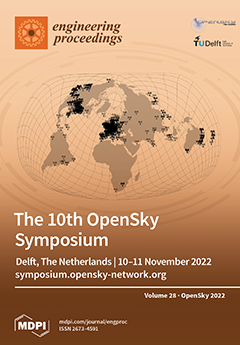Eng. Proc., 2022, OpenSky 2022
The 10th OpenSky Symposium
Delft, The Netherlands | 10–11 November 2022
Volume Editors:
Michael Schultz, Universität der Bundeswehr München, Germany
Junzi Sun, Delft University of Technology, The Netherlands
Xavier Olive, The French Aerospace Lab, France
Martin Strohmeier, OpenSky Network, Switzerland
- Issues are regarded as officially published after their release is announced to the table of contents alert mailing list.
- You may sign up for e-mail alerts to receive table of contents of newly released issues.
- PDF is the official format for papers published in both, html and pdf forms. To view the papers in pdf format, click on the "PDF Full-text" link, and use the free Adobe Reader to open them.




